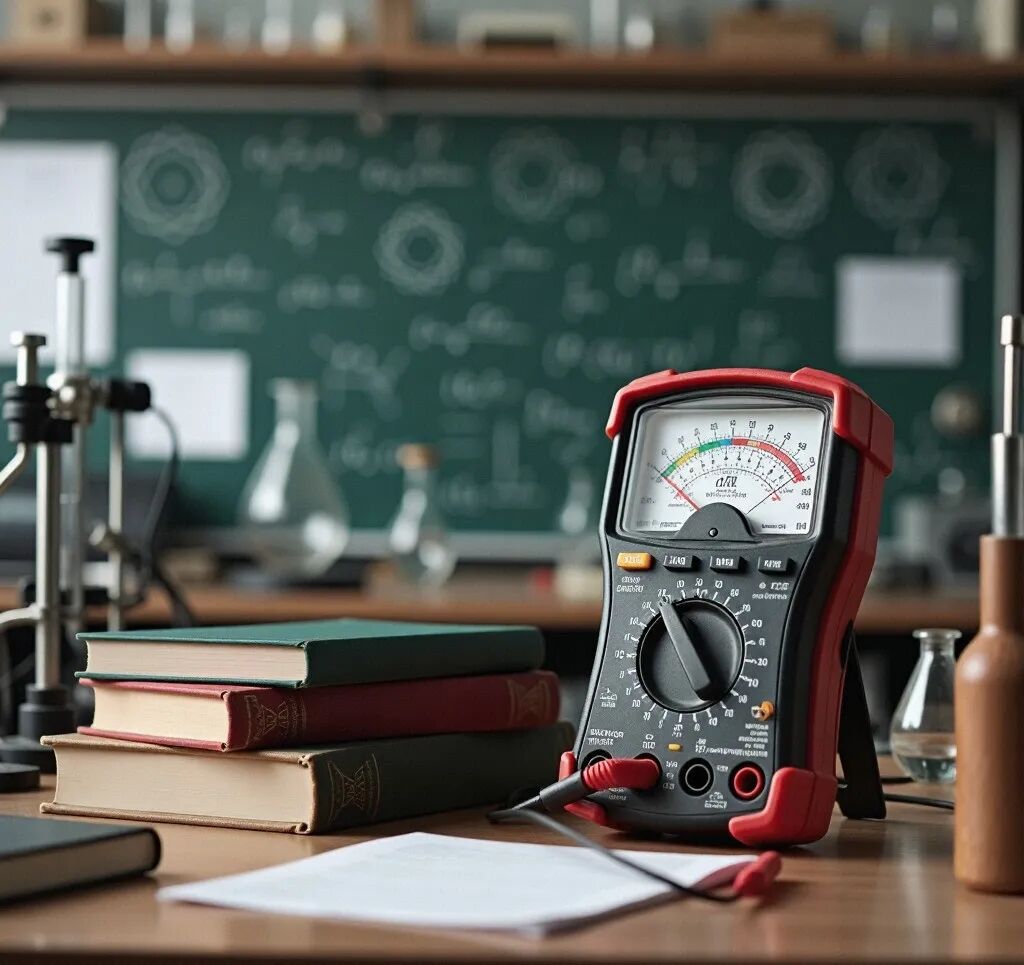In the toolkit of electricians, multimeters and megohmmeters are known as the “twin tools,” but their principles and uses are quite different. Understanding these is essential for precise electrical measurements, achieving more with less effort!
1. Multimeter: The ‘Measuring Philosopher’
A multimeter, also known as a multifunction meter, is a “jack of all trades” for measuring electrical parameters such as voltage, current, and resistance. Its principles integrate electromagnetic induction, Ohm’s law, and the principles of voltage division and current division.
Structure AnalysisMeasurement CircuitIncludes voltage divider resistors, shunt resistors, etc., akin to “Transformers,” adapting to different electrical measurements.Switching MechanismThe “commander” that switches measurement modes, allowing seamless transitions between DC voltage, AC current, resistance, and more.Display SectionAnalog displays rely on magnetic-electrical meters, while digital displays use A/D conversion for clear measurement results.Measurement Principles:Voltage MeasurementConnects to a high-impedance voltage divider circuit; DC voltage is adapted using voltage divider resistors, while AC voltage is rectified to DC for measurement, ensuring no impact on the circuit under test.Current Measurement: DC current is measured by connecting a small resistor (shunt) in series, calculating current I=U/R based on the voltage drop.AC current is measured after rectification.Resistance Measurement: An internal known voltage source is provided, and after measuring current, resistance is calculated using R=U/I.Continuity TestingIf resistance is below a certain value (e.g., 50Ω), a buzzer sounds, allowing for quick determination of circuit continuity.
2. Megohmmeter: The ‘Dedicated Detective’ of Insulation Resistance
A megohmmeter, also known as an insulation resistance tester, is specifically designed for high resistance (such as cable and transformer insulation resistance), based on Ohm’s law, capacitor charging and discharging, and high-voltage measurement.
Structure Analysis
High Voltage Power SupplyHand-cranked generators or electronic modules output DC high voltages of 500V, 1000V, or even 5000V, acting as a “powerful cannon” to break through insulation layers.Measurement CircuitA high-impedance voltage divider circuit accurately captures small leakage currents.Display SectionAnalog or digital displays show insulation resistance values, leaving no room for ambiguity regarding insulation status.Measurement Principles:High Voltage DC MethodApplies high voltage (e.g., 500V); if the insulation material has leakage currentI, then R=V/I calculates the insulation resistance. Due to the high insulation resistance (megohm level), extremely high input impedance is required to ensure accurate measurements.(megohm level), extremely high input impedance is required to ensure accurate measurements.Capacitance Charging and Discharging CharacteristicsThe tested device (e.g., cable) exhibits capacitive characteristics; under high voltage, it first charges, and after stabilization, the leakage current is read to calculate insulation resistance.Absorption Ratio and Polarization IndexThe absorption ratio (e.g., resistance ratio at 30s and 60s) reflects insulation absorption characteristics; the polarization index (resistance ratio at 10 minutes and 1 minute) assesses the long-term aging of the device, serving as a deep diagnostic indicator of insulation “health.”
3. In-Depth Comparison: Each Has Its Strengths, Choose According to Needs
| Parameter | Multimeter | Megohmmeter |
|---|---|---|
| Usage | Measures conventional parameters such as voltage, current, and resistance | Measures high resistance (megohm level insulation resistance) |
| Voltage Range | Low DC and AC voltage (mV~V level) | High voltage (500V~5000V) |
| Current Measurement | Low current (mA~A) | Only measures leakage current |
| Resistance Range | Ω~MΩ | MΩ~GΩ |
| Main Applications | Routine maintenance of electronic devices and circuits | Insulation testing and maintenance of electrical equipment |
The multimeter is like a “universal doctor,” suitable for routine electrical measurements; the megohmmeter is an “insulation detective,” specifically designed to uncover hidden issues in high insulation resistance, such as the insulation condition of transformers and cables.
In practical work, choosing the right tool is essential for efficiency and precision. Next time you face an electrical measurement task, consider: do you need the multimeter’s “versatile flexibility” or the megohmmeter’s “insulation expertise”? Understanding the principles and differences will ensure that every measurement is “targeted”!